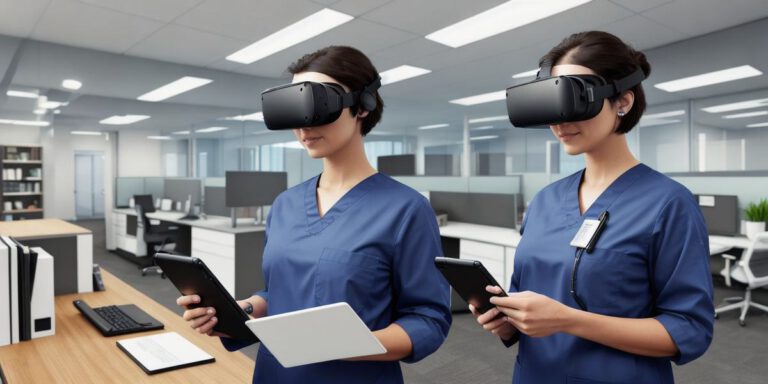Virtual Reality for Telemedicine: Revolutionizing Patient-Provider Interactions

Virtual reality (VR) is a game-changing technology that has the potential to transform the way healthcare providers interact with patients. With VR, medical professionals can create immersive experiences that allow them to diagnose and treat conditions remotely. In this article, we’ll explore how VR is being used in telemedicine and why it’s becoming increasingly popular among doctors and developers alike.
Virtual Reality in Telemedicine
Telemedicine is the use of technology to provide healthcare services remotely. It allows patients to access medical care without having to travel to a physical location. VR has been used in telemedicine for several years now, but it’s only recently that its full potential has become apparent.
One of the main benefits of using VR in telemedicine is the ability to create immersive experiences for patients. For example, a patient with a phobia can be treated in a virtual environment where they can confront their fears in a controlled setting. This type of therapy is called exposure therapy and has been shown to be highly effective.
Another area where VR is being used in telemedicine is in surgical training. Medical students can use VR simulations to practice complex procedures without the risk of harming real patients. This allows them to gain valuable experience and improve their skills, ultimately leading to better patient outcomes.
VR is also being used in rehabilitation therapy. Patients with injuries or illnesses can use VR to simulate physical activities that they may not be able to do in real life. This can help speed up their recovery process and improve their overall health.
The Future of Virtual Reality in Telemedicine
As technology continues to advance, we can expect to see even more innovative uses for VR in telemedicine. For example, doctors could use VR to perform surgeries remotely, allowing them to reach patients who live far away from specialized care centers. This would save patients time and money while also improving their access to quality medical care.
VR could also be used to treat mental health conditions in a more effective way. For example, patients with depression or anxiety could use VR to create customized virtual environments that help them cope with their conditions. This type of therapy is called exposure therapy and has been shown to be highly effective.
In conclusion, VR has the potential to revolutionize telemedicine by creating immersive experiences that allow medical professionals to diagnose and treat conditions remotely. As technology continues to advance, we can expect to see even more innovative uses for VR in healthcare. The future of virtual reality in telemedicine is bright, and it’s up to us to embrace this technology and its potential.








